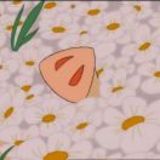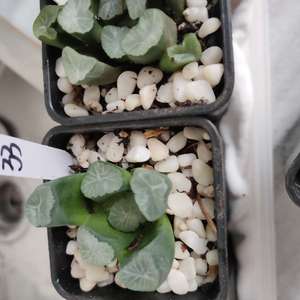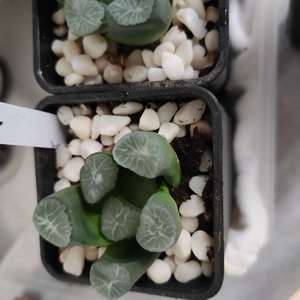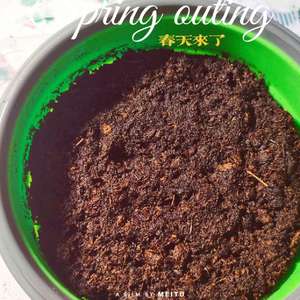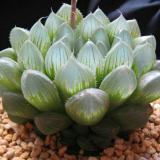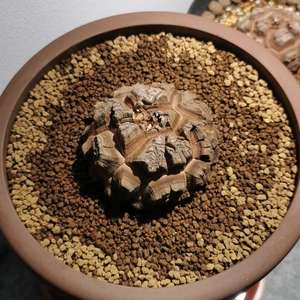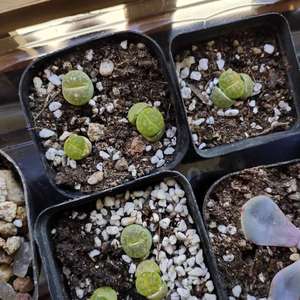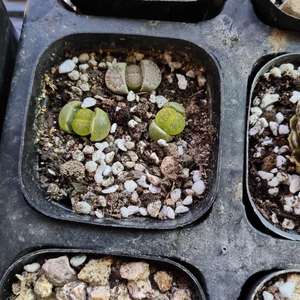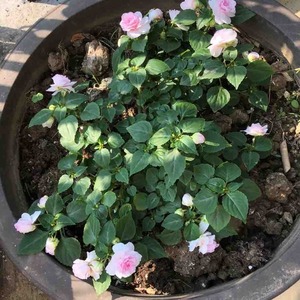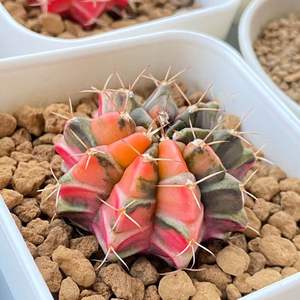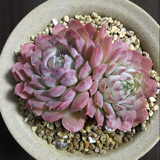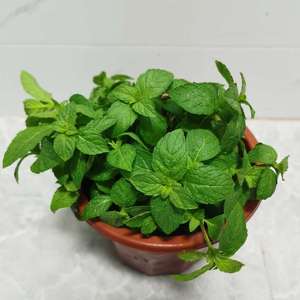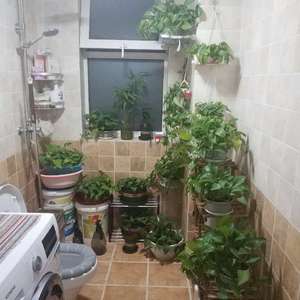文章
Miss Chen
2022年05月28日

Cordyline, or ti, is a common decorative plant that thrives outdoors in USDA hardiness zones 9 through 12, but it also makes an excellent houseplant with its long, spikey leaves. Cordyline typically has leathery leaves in a variety of colors, including green, red, yellow, white, purple, and purplish-red.
Some species in this group have fragrant flowers followed by berries. The moderate-growing plant will produce white, pink, or pale lavender flowers that are cup-shaped and sweet-smelling. They bloom in early summer and then small berries will appear after the flowers. It's more typical for flowering to occur in outdoor varieties, but flowers can appear on houseplants. If you plant cordyline outside, do so in the spring. This plant is toxic to dogs and cats.1
Common Name Cordyline, Hawaiian ti plant, good luck plant
Botanical Name Cordyline terminalis
Family Asparagaceae
Plant Type Evergreen shrub
Mature Size 2-4 ft. tall and wide
Sun Exposure Full-sun, partial sun
Soil Type Well-draining
Soil pH Neutral to acidic, 6-6.5
Bloom Time Summer
Flower Color White, pink, lavender
Hardiness Zones 9-12 (USDA)
Native Area Pacific Islands, Southeast Asia
Toxicity Highly toxic to dogs and cats
Cordyline Care
Tropical cordyline is a hardy plant if you grow it in the right climate. Its many varieties are colorful and cheery, and it's an attractive low-maintenance evergreen shrub. Ti will bring color to both your indoor or outdoor garden, and it's very easy to maintain.
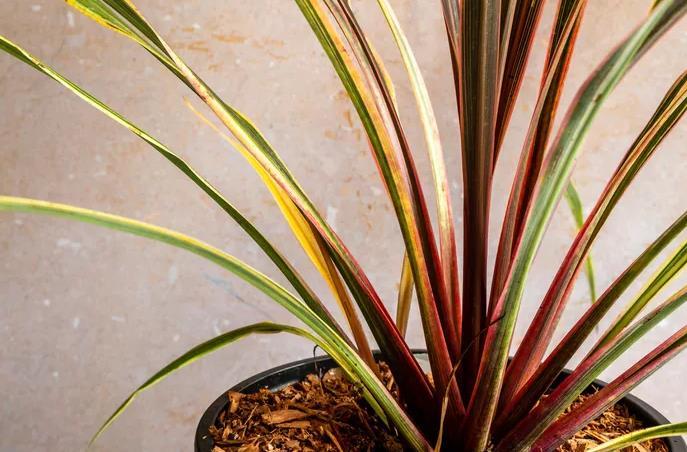
The name Cordyline originates from Greek; the word kordyle, meaning "club," is a reference to the plant's vigorous root system. If you've planted cordyline outdoors in a raised garden bed, the root system can sometimes grow so large it may disrupt surrounding plants.
Light
Ti needs bright light, but avoid direct sunlight in unhabituated plants. Also, green-leaved cordyline tends to do best with direct light, while those with other colored leaves may prefer bright indirect or filtered sunlight.
Soil
Cordyline needs a rich, well-drained high-quality potting mix with a pH of 6-6.5.
Water
Ti plants prefer to be watered when the surface of its soil feels dry. Water until it starts to run out of the drainage holes. Do not put the drained water back into the plant.
Fertilizer
These plants can be fed in the spring with slow-release pellets. You can feed the plant weekly during the growing season with a liquid 20-20-20 fertilizer at half-strength. Do not fertilize during the winter.
Temperature and Humidity
Ti thrives in temperatures above 62 degrees Fahrenheit and prefers a high humidity environment. Avoid putting the plant near a cold draft like a window. These are tropical plants, so if you're experiencing leaf drop, try raising both the temperature and humidity.
Types of Cordyline
'C. australis': resembles the yucca plant with narrow, long, and grayish to dark leaves
'Calypso Queen': boasts ruby-maroon leaves
'Oahu Rainbow': shows off dark-green leaves streaked with cream and white
'Firebrand': offers beautiful pink leaves that darken to maroon
'Hilo Rainbow': displays deep-green foliage with pops of burgundy
Pruning
A mature, well-trimmed plant should have stems of various heights, up to 3 feet to 4 feet (some stems can go much higher), and be clothed in leaves to the soil level. Over time, cordylines tend to become leggy, so you may want to trim back individual stems in a staggered pattern to keep the plant full.
Propagating Cordyline
Propagating ti is typically done with stem cuttings. The easy process is as follows:
Cut 3- to 5-inch pieces from mature stems and remove all of the leaves.
Lay the pieces in a damp mixture of sand and perlite, and keep in a room that's at least 62 degrees Fahrenheit.
Shoots will grow from the eyes of the stems and can be planted in potting soil when they have about four to six leaves each. You can repot in spring or every other spring, as needed.
How to Grow Cordyline From Seed
Ti can be grown with purchased seeds or harvested seeds from the ripened berries that you may occasionally find even on an indoor plant.
Harvested seeds need to be squeezed out of the berry and cleaned. If you found indoor berries, just clean the seeds and let them air-dry for a few days before planting. If you found your berries outdoors, they'll need to be stratified for several months before planting.
When seeds are ready, sow them in well-draining, sandy compost. Germination should happen in four to six weeks, but possibly longer.
Potting and Repotting Cordyline
Cordyline does well in pots, especially if you don't live in a tropical climate: You can just bring them indoors for the winter. When it's time to move the plant outdoors during warmer months, make sure the outdoor soil drains well and any threat of frost has passed.
The plant doesn't need to be repotted unless it's growing too large for its pot, which might be every few years. When repotting, Choose a tall pot of any material with adequate drainage holes for cordyline to accommodate two to three years of root growth.
Overwintering
If you're at the cooler end of cordyline's hardiness zones (9 through 12), you can tie up your plant's leaves with natural twine to keep them safe in cooler months; Just be sure they're dry before you do so to avoid rot. Outdoor cordyline plants also need to be well secured in harsh, windy conditions; The long, thin leaves can thrash in the wind and cause the plant to topple over.
Common Pests & Plant Diseases
Cordyline is prone to common pests and problems, such as scale insects, spider mites, and mealybugs. All of these can be fixed with either neem oil or insecticidal soap.
Ti also attracts bacterial leaf spot and root rot. You can try to beat both of these problems with fungicide and by making sure the plants aren't sitting in soil that's too wet.
Common Problems With Cordyline
This otherwise easy-going tropical plant will let you know if it's in trouble by the condition of its leaves. Here's how to fix a leaf issue.
Browning Tips
This is a common problem with many houseplants, including indoor-grown cordyline. The plant may be experiencing underwatering, overwatering, too much fertilizer, root rot, or even overly dry air.
However, another issue could be the salts and fluoride in the tap water used to moisten the plant. Cordyline is sensitive to fluoride, which is found in many residential water supplies. Flush the plant, or before watering, leave the water in an open container overnight to reduce chlorine and salts. You can also switch to distilled or bottled water or harvest rainwater for plants.
Leaves Turning Yellow
A second common problem with houseplants like cordyline is the yellowing of leaves. Most plants naturally shed older yellow leaves. But, if your cordyline's leaves are turning yellow, it may also mean it has a watering issue or it's getting too much sunlight. It needs indirect bright light rather than harsh rays directly on the leaves.
Yellow leaves could also mean your plant is in a spot where there are frequent temperature fluctuations. Check for drafts. Allow the leaves to drop and see how the plant fares in another spot.

If you see that the lower leaves are turning yellow, that usually means there's root rot. Check for waterlogged or blackened roots. Unfortunately, you may not be able to save a cordyline plant with root rot.
FAQ
Is cordyline easy to grow?
Caring for these plants indoors (and outdoors) is easy, simple, and straightforward. But, they must be kept warm and they need a lot of light.
Why is cordyline considered a lucky plant?
In many areas of the world, the ti plant is considered to have mystical powers that bring good luck, long life, and lasting love to its owner. For example, in Hawaii, cordyline is planted around homes to bring good luck to the homeowners.
What is the difference between cordyline and dracaena?
Cordyline and dracaena plants are often confused because they look alike with nearly identical spikey leaves. You can tell the difference by the color roots. Cordyline plants have white roots and dracaena have orange roots.
Some species in this group have fragrant flowers followed by berries. The moderate-growing plant will produce white, pink, or pale lavender flowers that are cup-shaped and sweet-smelling. They bloom in early summer and then small berries will appear after the flowers. It's more typical for flowering to occur in outdoor varieties, but flowers can appear on houseplants. If you plant cordyline outside, do so in the spring. This plant is toxic to dogs and cats.1
Common Name Cordyline, Hawaiian ti plant, good luck plant
Botanical Name Cordyline terminalis
Family Asparagaceae
Plant Type Evergreen shrub
Mature Size 2-4 ft. tall and wide
Sun Exposure Full-sun, partial sun
Soil Type Well-draining
Soil pH Neutral to acidic, 6-6.5
Bloom Time Summer
Flower Color White, pink, lavender
Hardiness Zones 9-12 (USDA)
Native Area Pacific Islands, Southeast Asia
Toxicity Highly toxic to dogs and cats
Cordyline Care
Tropical cordyline is a hardy plant if you grow it in the right climate. Its many varieties are colorful and cheery, and it's an attractive low-maintenance evergreen shrub. Ti will bring color to both your indoor or outdoor garden, and it's very easy to maintain.

The name Cordyline originates from Greek; the word kordyle, meaning "club," is a reference to the plant's vigorous root system. If you've planted cordyline outdoors in a raised garden bed, the root system can sometimes grow so large it may disrupt surrounding plants.
Light
Ti needs bright light, but avoid direct sunlight in unhabituated plants. Also, green-leaved cordyline tends to do best with direct light, while those with other colored leaves may prefer bright indirect or filtered sunlight.
Soil
Cordyline needs a rich, well-drained high-quality potting mix with a pH of 6-6.5.
Water
Ti plants prefer to be watered when the surface of its soil feels dry. Water until it starts to run out of the drainage holes. Do not put the drained water back into the plant.
Fertilizer
These plants can be fed in the spring with slow-release pellets. You can feed the plant weekly during the growing season with a liquid 20-20-20 fertilizer at half-strength. Do not fertilize during the winter.
Temperature and Humidity
Ti thrives in temperatures above 62 degrees Fahrenheit and prefers a high humidity environment. Avoid putting the plant near a cold draft like a window. These are tropical plants, so if you're experiencing leaf drop, try raising both the temperature and humidity.
Types of Cordyline
'C. australis': resembles the yucca plant with narrow, long, and grayish to dark leaves
'Calypso Queen': boasts ruby-maroon leaves
'Oahu Rainbow': shows off dark-green leaves streaked with cream and white
'Firebrand': offers beautiful pink leaves that darken to maroon
'Hilo Rainbow': displays deep-green foliage with pops of burgundy
Pruning
A mature, well-trimmed plant should have stems of various heights, up to 3 feet to 4 feet (some stems can go much higher), and be clothed in leaves to the soil level. Over time, cordylines tend to become leggy, so you may want to trim back individual stems in a staggered pattern to keep the plant full.
Propagating Cordyline
Propagating ti is typically done with stem cuttings. The easy process is as follows:
Cut 3- to 5-inch pieces from mature stems and remove all of the leaves.
Lay the pieces in a damp mixture of sand and perlite, and keep in a room that's at least 62 degrees Fahrenheit.
Shoots will grow from the eyes of the stems and can be planted in potting soil when they have about four to six leaves each. You can repot in spring or every other spring, as needed.
How to Grow Cordyline From Seed
Ti can be grown with purchased seeds or harvested seeds from the ripened berries that you may occasionally find even on an indoor plant.
Harvested seeds need to be squeezed out of the berry and cleaned. If you found indoor berries, just clean the seeds and let them air-dry for a few days before planting. If you found your berries outdoors, they'll need to be stratified for several months before planting.
When seeds are ready, sow them in well-draining, sandy compost. Germination should happen in four to six weeks, but possibly longer.
Potting and Repotting Cordyline
Cordyline does well in pots, especially if you don't live in a tropical climate: You can just bring them indoors for the winter. When it's time to move the plant outdoors during warmer months, make sure the outdoor soil drains well and any threat of frost has passed.
The plant doesn't need to be repotted unless it's growing too large for its pot, which might be every few years. When repotting, Choose a tall pot of any material with adequate drainage holes for cordyline to accommodate two to three years of root growth.
Overwintering
If you're at the cooler end of cordyline's hardiness zones (9 through 12), you can tie up your plant's leaves with natural twine to keep them safe in cooler months; Just be sure they're dry before you do so to avoid rot. Outdoor cordyline plants also need to be well secured in harsh, windy conditions; The long, thin leaves can thrash in the wind and cause the plant to topple over.
Common Pests & Plant Diseases
Cordyline is prone to common pests and problems, such as scale insects, spider mites, and mealybugs. All of these can be fixed with either neem oil or insecticidal soap.
Ti also attracts bacterial leaf spot and root rot. You can try to beat both of these problems with fungicide and by making sure the plants aren't sitting in soil that's too wet.
Common Problems With Cordyline
This otherwise easy-going tropical plant will let you know if it's in trouble by the condition of its leaves. Here's how to fix a leaf issue.
Browning Tips
This is a common problem with many houseplants, including indoor-grown cordyline. The plant may be experiencing underwatering, overwatering, too much fertilizer, root rot, or even overly dry air.
However, another issue could be the salts and fluoride in the tap water used to moisten the plant. Cordyline is sensitive to fluoride, which is found in many residential water supplies. Flush the plant, or before watering, leave the water in an open container overnight to reduce chlorine and salts. You can also switch to distilled or bottled water or harvest rainwater for plants.
Leaves Turning Yellow
A second common problem with houseplants like cordyline is the yellowing of leaves. Most plants naturally shed older yellow leaves. But, if your cordyline's leaves are turning yellow, it may also mean it has a watering issue or it's getting too much sunlight. It needs indirect bright light rather than harsh rays directly on the leaves.
Yellow leaves could also mean your plant is in a spot where there are frequent temperature fluctuations. Check for drafts. Allow the leaves to drop and see how the plant fares in another spot.

If you see that the lower leaves are turning yellow, that usually means there's root rot. Check for waterlogged or blackened roots. Unfortunately, you may not be able to save a cordyline plant with root rot.
FAQ
Is cordyline easy to grow?
Caring for these plants indoors (and outdoors) is easy, simple, and straightforward. But, they must be kept warm and they need a lot of light.
Why is cordyline considered a lucky plant?
In many areas of the world, the ti plant is considered to have mystical powers that bring good luck, long life, and lasting love to its owner. For example, in Hawaii, cordyline is planted around homes to bring good luck to the homeowners.
What is the difference between cordyline and dracaena?
Cordyline and dracaena plants are often confused because they look alike with nearly identical spikey leaves. You can tell the difference by the color roots. Cordyline plants have white roots and dracaena have orange roots.
0
0


